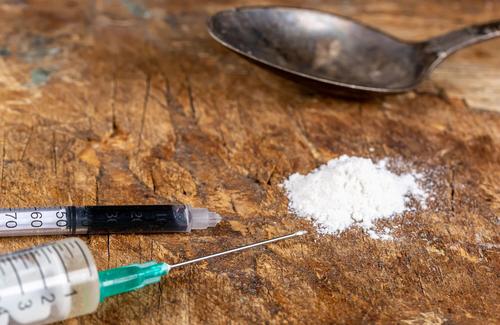
There has been considerable publicity in the gay, scientific and general media recently about so-called ‘slamming’ or ‘slam parties’, defined as group sex parties where gay men take drugs such as methamphetamine or mephedrone, often by injection, in order to facilitate prolonged sexual activity. Needless to say, these reports have created considerable alarm about the possibility of a new gay subculture that may amplify the spread of HIV and hepatitis C, and anecdotally, the large majority of gay men attending support services for drug users in London now report injecting.
In response to concern about a similar scene developing in France, Net Gai Baromètre (NGB), a biennial internet survey of gay men in France, French territories and Quebec, asked users if they attended ‘slam parties’ in their last survey to gauge how common this activity actually was.
It asked the questions in both the section of the survey enquiring about sexual risk taking and in the section about drug use to ensure all relevant responses were captured. However, nowhere did the NGB define what a ‘slam party’ actually was: it wanted participants to decide whether they belonged to this subculture and then explain what they actually did.
Over 14,000 gay men answered the last survey and of them 3115 (22%) reported that they had had ‘bareback sex’, defined by the researchers as unprotected anal sex with someone who is not a regular partner and is of different or unknown HIV status. Only these men were asked whether they attended ‘slam parties’ and a total of 270 (1.9%) said they did.
However, the researchers found that two very distinct groups attended the parties. Most of the men took drugs of one sort or other, but one group (116 men or 0.8% of respondents) was characterised by the use of one or two drugs that in gay circles tend to be specifically associated with sex – MDMA, GHB or GBL, erection drugs such as Viagra or Cialis, poppers (nitrites), snorted cocaine and drugs of the mephedrone family (‘miaow miaow’ or ‘bath salts’). These men did not spend much time actively consuming substances in the party and by and large did not inject.
The other group had higher usage rates of all drugs than the first group, except for MDMA, but also were the main users of ‘harder’ drugs such as methamphetamine, other amphetamines, ketamine, crack cocaine and heroin. They were much more likely to inject, spent more time in the parties actually consuming drugs, and were more likely to report poly-drug use of several substances at once.
There were also six individuals who reported going to slam parties but not having bareback sex – but this is such a small number that it appears that in the minds of the respondents, a ‘slam party’ is defined more as a group sex party than one featuring drug use.
The members of the first, low-drug-using group were by some measures, in multivariate analysis, more sexually active: they had more unprotected sex, more regular unprotected sex with casual partners and more regular unprotected sex with casual partners of different or unknown HIV status than the high drug-using group, and were not very much less likely to report group sex despite lower rates of using drugs while doing it. They were also considerably less likely to identify as gay: 60% less likely than all NGB respondents, whereas the high-drug-using group members were 2.7 times more likely to identify as gay than average. The high drug-using group was also more likely to have regular unprotected sex with men with the same HIV status, were more likely to have a university education, were more likely to pay for or be paid for sex, and were somewhat more likely not to have been born in France or Canada.
The first group were more likely to have HIV than the NGB respondents in general (2.3 times more likely) but not statistically more likely to have hepatitis C: in contrast the second group were actually not more likely to have HIV but were much more likely to have hepatitis C. Both groups reported needle sharing but, while the first group was eleven times more likely to report ever having shared a needle than the NGB respondents in general, the second group was 75 times more likely to report this.
Researcher Alain Leobon commented that men who have sex with men who attend ‘slam parties' are not a homogenous population. The majority attending slam parties also did not inject drugs or, if they did, did not share needles: this behaviour was largely restricted to a specific minority of poly-drug users.
Slam parties remain a marginal aspect of bareback sex culture: “Entering the ‘slam culture’ is not casually achieved,” Leobon commented.
The parties also feature two groups with very different behaviours, and there may be ways of devising harm reduction messages that ensure the first group doesn’t become the second and start using needles more often – assuming there is ‘migration’ between groups, which there may not be if the demographics and motives for going to slam parties are very different.
Future prevention should adapt intervention strategies for risk reduction to a mixed audience shared between sexual motives and substance consumption, Alain Leobon said. “Some come for the sex, and some come for the drugs: this represents a complex and challenging issue for community prevention organisations, as it requires stakeholders to combine several strategies, particularly on the issue of harm reduction.”
Leobon A et al. Ways of participating in sex parties where Slam is practiced, among barebacker Men who have Sex with Men (MSM), according to Net Gay Baromètre (NGB) 2013. Eleventh AIDS Impact Conference, Barcelona, abstract #3724, 2013.

